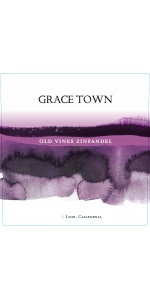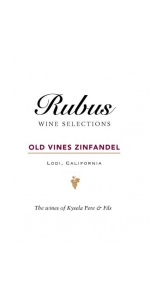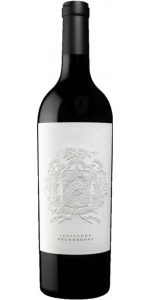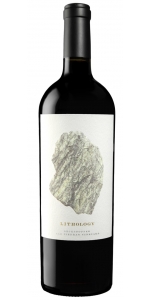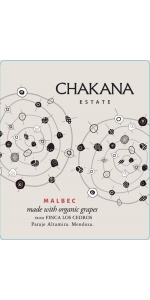Uvaggio Vermentino Lodi 2018
| Country: | United States |
| Regions: | California California (Lodi) |
| Winery: | Uvaggio |
| Grape Type: | Vermentino |
| Vintage: | 2018 |
| Bottle Size: | 750 ml |
Grace Town Old Vine Zinfandel Lodi is amde from 98% Old VIne Zinfandel + 2% Cabernet Sauvignon.
Ruby red in color, with red fruit, raspberry, and spice on the nose. This wine is medium in body, with notes of ripe cherry, cedar box, cinnamon, anise, black pepper, and hint of smoke on the palate. It has a long, silky finish.
SALE!
Lodi, American Viticulture Area (AVA) – The Lodi AVA is located in the northern end of the San Joaquin Valley, Central Valley California, east of the San Francisco Bay. Lodi has warm days and cool nights, similar to the Mediterranean climate. The lower temperatures that occur in Lodi result in fruit with good acidity. A wide range of soils are found in the Lodi AVA, but they generally are deep, loamy, sandy, rocky soils similar to that found in southern Rhone valley.
The Lodi appellation totals almost one half million acres, and the approximately eight hundred growers farm roughly 90,000 acres. Lodi produces more Cabernet Sauvignon, Chardonnay, Merlot, Sauvignon Blanc, and Zinfandel than any other wine region in California, but it is probably best known for its old vine Zinfandel. The vines are often head trained giving them a classic old world appearance.
Zinfandel – The Zinfandel grape is a hearty variety that produces grapes with high sugar levels, often resulting in wines with a high alcohol content. Thought to be a relative of Primitivo that is found in southeast of Italy (the boot heel), Zinfandel can be made into a wide range of wine styles, including White Zinfandel, light or full bodied red wines, and even late harvest desert style wine. However Zinfandel, especially Old Vine Zinfandel from Lodi, is usually made into a full bodied, spicy red wine with characteristics of red fruit, raspberry, and cherry.
Produced in the heart of Lodi AVA.
Rubus Zinfandel Lodi is made from 98% Zinfandel + 2% Cabernet Sauvignon
Bottled after aging in French and American oak for 9 months.
Rubus Zinfandel Lodi presents with ruby red in color, with red fruit, raspberry, and spice on the nose. This wine is medium in body, with notes of ripe cherry, cedar box, cinnamon, anise, black pepper, and hint of smoke on the palate. It has a long, silky finish.
Selected by Fran Kysela MS.
When the founding fathers of the Napa Valley carved out new sub-AVAs (American Viticultural Areas) in the 1980s, Soda Canyon Ranch was not yet on anyone’s map. The vineyard is neighbored to the northwest and west by the winegrowing districts of Stags Leap District and Oak Knoll District, respectively, which were among the early pioneers of California Cabernet Sauvignon to attain global fame. To the northeast and southeast—and further off the beaten path—were Atlas Peak and Coombsville, thought to be the next frontiers for the emerging wine-producing region.
With richness and depth of flavor, the 2018 Timeless Napa Valley is the embodiment of patience and attention to detail. Decades of experience at Soda Canyon Ranch allow winemaker Nate Weis and team to highlight the individual merits of each block. Combining the strongest lots from each resulted in a refined and harmonious bottling.
In 2018, the diurnal shift at Soda Canyon Ranch produced a darker, lusher fruit profile of Cabernet Sauvignon. Simultaneously, the overnight recovery periods resulted in expressive and refined Merlot, giving the wine a pleasant profile of bright, red fruit. With an extended harvest window, the signature, plush density and structure of Petit Verdot is also prevalent in the final blend. Cabernet Franc thrived in 2018 with its predilection for the cooler soils and the climate of blocks 5, 6, 16, 20 and 21—areas we call the Transition Zone and Hardpan Alley. The variety’s floral and tobacco-like aromatics are accentuated, and its more aggressive nature for back-end tannins tamed.
Once blended, the 2018 vintage rested in French oak barrels for 16 months, developing flavors of vanilla and baking spice. Velvety tannins dance across the palate of bright and lingering cassis. With a smooth finish, this is a comforting wine of elegance and depth—a sophisticated expression of the sedate summer.
Review:
This is a little old-school and shows lots of dark berry, chocolate and dried fruit. It’s full, dense and layered with fleshly sensibility. Velvety texture.
-James Suckling 93 Points
All older vintage wines have been purchased from a single collectors cellar. Pictures can be requested before shipment.
It is hard to imagine with the Lithology range receiving 298 points out of 300 for the three single-vineyard wines, that there could possibly be a wine above them. But there is, and it is our Estate wine. Blended several times very intently by masters of their craft Philippe Melka and Michel Rolland, this is the ultimate expression of our house’s work. Positive, full-bodied, and quite powerful, there’s the expected crème de cassis and blackberry from St. Helena Cabernets, with mineral, herb, subtle tobacco and vanilla, plum skins, and pie crust, purple flowers, forest-conifer notes, and very fine tannic structure. It is a magnificent, and magnificently elegant expression of this house, and when asked recently, Monsieur Rolland stated plainly to me, “oh yes indeed – this is the best one, the best yet…”
Review:
The flagship 2018 Cabernet Sauvignon Alejandro Bulgheroni comes from a selection made by winemakers Philippe Melka and Michel Rolland, mostly from Rutherford and Oakville fruit. Aged 20 months in 78% new French oak, it has incredible aromatics of black and blue fruits, spring flowers, and graphite to go with a massive, full-bodied, concentrated style on the palate that somehow stays graceful, weightless, and elegant. This tour de force in Napa Valley Cabernet Sauvignon is guaranteed to put a smile on your face over the coming 20-25+ years.
-Jeb Dunnuck 99 Points
Alejandro Bulgheroni Lithology Beckstoffer Las Piedras Cabernet Sauvignon is made from 100 percent Cabernet Sauvignon.
From a St. Helena vineyard planted by early Napa settler Edward Bale more than 150 years ago, and later serving as the estate vineyard for the area’s first winery built by Henry Pellet in 1860, the Las Piedras site always gives us our prettiest wine. When placed next to Dr. Crane and To-Kalon wines, the Las Piedras show a certain elegance, with a very graceful entry and finely detailed complexity. We produce it with at least 75% new French oak, so there is a floral, spicy, and vanilla accent to the intense red and black fruits, cassis, and black cherry liqueur. What distinguishes this bottling is the beautifully fine tannins, delicate texture, and stunning purity. (Less than 100 cases made.)
Fermentation 70% Oak, 24% Concrete, 6% Puncheon
Review:
"The 2018 Cabernet Sauvignon Lithology Beckstoffer Las Piedras Vineyard comes from a world-class site outside of St. Helena and is all Cabernet that spent 20 months in 80% new oak. It offers a touch more red fruit as well ample cassis, spring flowers, loamy earth, and spice-like aromas and flavors. It has a wonderful sense of minerality, ultra-fine tannins, a dense, layered texture, and incredibly purity of fruit. It’s another just about off the charts release from this estate."
- Jeb Dunnuck 98 Points
Uvaggio Vermentino Lodi is made from 100 percent Vermentino.
About twenty years ago we had a hard time even spelling Vermentino and today it is emerging as one of the more popular Italian white grapes. It is even catching on here in California, thanks in part to Uvaggio's efforts, because it seems to them the perfect white grape.
It possess the utility of many dry and non-barrel aged whites but perhaps with greater versatility and certainly more charm – not too thin, not too tart, not too herbal - in other words it lacks an Achilles’ heel - supple and accessible, without any challenges.
The 2018 botting showcases two decades of growing this variety in Lodi, across multiple sites spanning four different sub AVAs.
Review:
"Herbaceous aromas and bright citrus flavors give an almost-electric charge to this light-bodied, crisp and appetizing wine. Aromas of snap peas, parsley and fresh-cut grass lead to lemon and grapefruit flavors and a tingly mouthfeel. It's a perfect summer-to-fall drink." — Jim Gordon Wine Enthusiast
Uvaggio makes wine in California from grape varieties indigenous to Italy and the south of France.
Our theory is that if California has a climate which is great for growing Mediterranean varietals, why not take advantage of it? Since we have been on this path for a couple of decades now, we think we have found the right places, for growing these cultivar, primarily in Lodi So we urge you to discover this for yourself and try our wines.
Our expressions are steeped in California's traditions, with a nod towards Europe’s restraint, so you will our wines to be a contemporary synthesis of these two approaches. We produce white wines that are fresh, aromatic, dry and rarely exceed 12.5% alcohol. None of our barrel-aged reds are rarely exceed 14.5% alcohol. The only sweet wines we offer are purposely crafted to be sweet.
We are passionate about wine and food affinities, the magic that occurs when they resonant.
Always expand your horizons by trying something different.
Wine is meant to be enjoyed with food and always complement a meal.
One should endeavor to seek value and never fall prey to hype and high prices.
If you like one of our wines, please try another, in a quest for enjoying something new.
In By 1979 Jim had joined the Robert Mondavi Winery in Oakville and spent two decadess at what was then perhaps California’s most renowned, if not iconic, winery. Working for such an innovative and dynamic winery lead by a truly inspirational founder, afforded many benefits. In conjunction with course work in winemaking and wine business at UC Davis, his efforts resulted in several career milestones. Among them, he envisioned and developed La Famiglia di Robert Mondavi in California, while helping to launch Luce and Lucente from Tuscany - a collaborative effort with the Frescobaldi family of Florence.
Some of his other accomplishments included developing two vineyard trial blocks to evaluate the performance of Italian and Rhône varieties. He also helped to develop the company’s Burgundian-inspired, Carneros appellation Chardonnay and Pinot Noir. Jim reintroduced Zinfandel to the portfolio (from Napa Valley’s miniscule old vine sources) and totally revamped the style and packaging for Moscato d’Oro. His efforts earned many accolades, including three Wine Spectator Top 100 Wines of the Year, as well as a coveted “tre bicchiere” from Gambero Rosso, Italy’s pre-eminent wine guide. After being promoted to Assistant Winemaker, he was tasked with helping to elevate the quality of Mondavi’s entire Napa Valley portfolio and planned cellar renovations.
In 1998, Moore left Mondavi to develop l’Uvaggio di Giacomo, which translates as “the Blends of James” (or in other words “Jim’s Wine”) which he had begun with the 1997 vintage. He also served as the consulting winemaker for several new Napa Valley start-up ventures, along with helping revive the fortunes of a small, family winery in St Helena. Seeking a break from Napa Valley, in early 2003 he became Director of Winemaking for Bonny Doon Vineyard/Ca’ del Solo, only leaving to devote himself full time to revitalizing his Uvaggio project.
Today the Uvaggio label is a vinous statement four decades in the making. The diverse portfolio consists of a range of wines, though focuses on Vermentino and Primitivo. Emphasizing attributes like vibrant flavors, moderate pricing, lower levels of alcohol, and balanced expressions, these are wines crafted for food affinity and daily enjoyment, bringing an Italian sensibility to the American table. With a belief that wine’s primary role is to accompany a meal, the success of the Uvaggio rests on three important attributes - their accessibility, harmony and value.
Jim Moore is a graduate of UCLA and has traveled extensively in northern and central Italy and for several years worked side-by-side with winemakers in Tuscany. Valuable time was also spent during repeat visits to France’s Burgundy and Bordeaux regions. Jim resides in Napa, endeavoring to explore new vinous horizons daily.
Jim Moore’s creation and development of his own wine label - Uvaggio - is a gratifying personal achievement. His approach to winemaking seeks to optimize each vineyard’s potential by using rather basic and straightforward techniques to craft distinctive wines from lesser known grape varieties grown in the New World.
His winemaking style is as much Mediterranean as it is Californian Tasted blind, one might actually imagine they come from regions bounded by the Adriatic or Tyrrhenian Seas, not the Pacific Ocean. These are not typical wines from a typical winemaker. With a career spanning four decades and having vinified grapes from most of California’s diverse regions (and in several parts of Italy) and across a broad range of cultivars (everything from Arneis to Zinfandel), his winemaking experience is prodigious, differentiating the Uvaggio wines from California’s typical, Franco-centric offerings.
Jim’s interest in Italian grape varieties began long before Pinot Grigio became ubiquitous in the market. While working in restaurants during college, followed by managing a fine wine retailer, his exposure to a vast spectrum of the world of wine inspired taking up a career in winemaking.
Mel Knox’s insight, knowledge, curiosity, and connections were ultimately parlayed into a successful business importing and selling wine barrels. Taransaud and François Frères are among the French cooperages he helped establish as the go-to barrel manufacturers for winemakers in the USA. He has subsequently had wine cuvées (and children) named after him, and although presently immersed in a state of semi-retirement, he staves off senescence with his involvement in Uvaggio.
SALE!
Finca los Cedros Single Vineyard Malbec is made from 100 percent Malbec.
Single vineyard wine from the Finca los Cedros vineyard in Paraje Altamira (3,600 ft. elevation). Planted in high density (8,000 plants per hectare) on calcareous gravel soils, this Malbec has a fresh & easy-drinking style with a mineral character.
Intense purple color. Plum, brambly berries, spices and an iris/violet note are apparent on the nose. Intense, fruity flavors with velvety tannins.
Fermentation with indigenous yeasts. Aged 12 months in oak barrels and concrete vats.
Excellent with roasted meats, duck, salad, pasta, pizza.
- back
The climate in the Champagne region in 2006 was characterised by a hot, dry season, which had a significant impact on the vines. September’s summery conditions were decisive, effectively drying out the outbreaks of botrytis and encouraging exceptional ripening of the grapes. Beginning on 11 September, the harvest stretched out for almost three weeks, the ideal time for a superior-quality crop. This vintage is a perfect example of how a favourable climate can influence the champagne quality.
Dom Pérignon Vintage 2006 Plénitude 2 marks a new encounter between Dom Pérignon and the year 2006, underlining the crucial importance of time in the making of this vintage. Its persistent, suspended light offers us an invitation to contemplation, celebrating the joy of a moment of perfection. This balance between earth and sky is underpinned by a strong tactile dimension, the authentic signature of Dom Pérignon: without touch, flavour does not unfold in either the space or time of the tasting, a perfect mirror of the space and time of its production. Today, Dom Pérignon 2006 Plénitude 2 enfolds us in its warm and luminous light. It then reveals its full-bodied, substantial and curvaceous qualities, leaving in its wake the emotion of a champagne that is both enveloping and delicate.
Dom Pérignon Vintage 2006 Plénitude 2 reveals a soft, warm and reassuring sweet bouquet, rich in subtle nuances. Its aromatic profile boasts a remarkable finesse with floral and mineral tones. This composition rapidly unfolds to reveal delicate notes of wild peach, citron, calisson and mocha, creating a unique and memorable experience on the nose. The palate of Dom Pérignon 2006 is full-bodied, both restrained and tender, developing into a thick texture that gradually becomes firmer. The complexity of the wine increases, revealing a subtly saline nuance. On the finish, an exquisite bitterness and wonderful maturity prevail, enriched by deep aromas of dried fruit, cocoa and toasted hazelnut, which blend harmoniously to offer an exceptional wine tasting experience.
Dom Pérignon Vintage 2006 Plénitude 2 is distinguished by its soft, warm character, ideally expressed when paired with seafood such as langoustine and scallops. This wine pairing harmony continues with veal and Jerusalem artichoke dishes, which highlight its delicate, enveloping nature. The flavours are further enhanced by herbs such as rosemary and basil, while hints of acidity from lemon and bergamot fully reveal its breadth and refined structure. This vintage illustrates Dom Pérignon’s ability to create fine wines that capture and enhance the essence of the ingredients with which they are served.
Review:
A blonde bombshell of a Champagne, hedonistic with its alluring brioche, creamed cherry and glazed tangerine flavors that show embellishments of fragrant saffron, candied ginger, fennel seed and vanilla, yet there's lovely definition and focus via the racy, lemon-infused acidity and plush texture. Long and minerally on the finish, with the rich profile joined by a subtle undertow of smoke, oyster shell and brine. Drink now through 2040.
-Wine Spectator 98 Points
M. Chapoutier Hermitage Monier de la Sizeranne is made from 100 percent Shiraz.
In Hermitage, Syrah achieves its noblest expression and La Sizeranne has become a benchmark wine for the region. M. Chapoutier's roots in the Rhône date back to 1808, when the family first settled in Tain l'Hermitage. The family purchased a winery owned by Comte Monier de la Sizeranne and over time, acquired a number of excellent vineyards, including some of the oldest in France. M. Chapoutier was the first winery to put Braille on a wine label in 1996. Maurice Monier de la Sizeranne was the owner of the plot of the Hermitage, la Sizeranne until he was blinded in a hunting accident and unable to take care of the land, choosing instead to sell to the Chapoutier family. Following his accident, Maurice became the inventor of the first version of abbreviated Braille, and Chapoutier included Braille on the wine labels as a tribute to his work.
he grapes ferment in open wooden vats after total destemming. Two daily treadings ensure a good extraction of the tannins. Maturation takes place in oak casks, of which one third is new. Several rackings permit a slow and natural clarification process. The wine is unfiltered and unfined.
Review:
I was blown away by the 2019 Hermitage Monier De La Sizeranne, and if there’s a best buy out there in 2019 Hermitage, this might be it. Blackberries, black raspberries, spice box, new leather, and bouquet garni all dominate the bouquet, and it’s full-bodied, with a round, layered mouthfeel, beautiful tannins, and a rare mix of richness and elegance. It’s a stunning wine that’s guaranteed to put a smile on your face over the coming 2+ decades. Hats off to the team at Chapoutier!
-Jeb Dunnuck 97 Points



